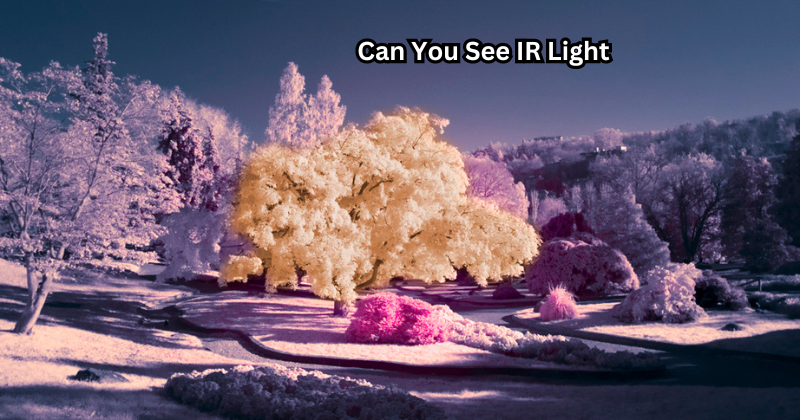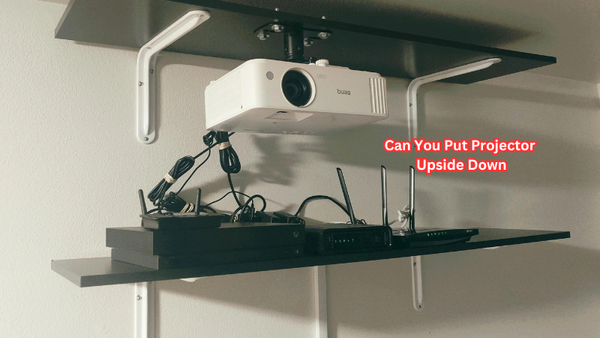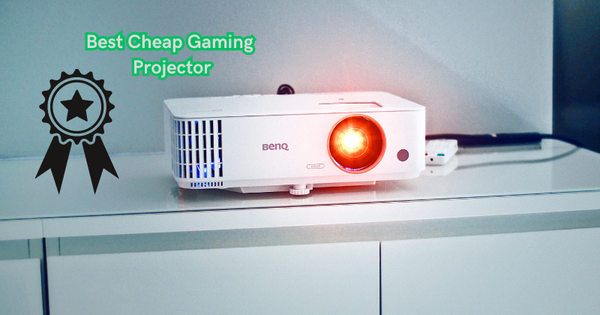In the realm of light, there exists a spectrum beyond the naked eye's perception—infrared (IR) light.
This invisible yet powerful form of electromagnetic radiation holds secrets waiting to be unveiled. From thermal imaging in night vision goggles to remote controls, IR light plays a crucial role in various technologies.
Join us on a journey to demystify the unseen as we delve into the fascinating world of IR light. Discover how this hidden spectrum influences our daily lives, unlocks new possibilities in communication, and enhances our understanding of the universe around us.
Let's shed light on the invisible with Can You See IR Light.
What is Infrared Light?
Infrared light, also known as IR light, is a type of electromagnetic radiation with wavelengths longer than those of visible light but shorter than radio waves. The visible light spectrum ranges from approximately 380nm to 700nm, while IR light falls between 700nm and 1mm.
IR light is invisible to the human eye, but its effects can be felt as heat. This is because IR light has a longer wavelength, and our eyes are not sensitive enough to detect it.
IR light can be categorized into three distinct types – near, mid, and far-infrared based on their wavelength range and applications. Near-IR has the shortest wavelength of 700 to 1400 nanometers and is used in communication devices such as remote controls and proximity sensors.
Mid-IR ranges from 1400 to 3000 nanometers and finds its use in thermal imaging cameras for night vision and medical imaging techniques like infrared spectroscopy. Far-IR has the longest wavelength of 3000 nanometers to 1 millimeter and is utilized in astronomy for studying celestial bodies.
Can You See IR Light?
The human eye is only capable of detecting a narrow range of wavelengths, known as the visible spectrum. This limited range includes red, orange, yellow, violet, blue, and green light. IR light falls outside this range and remains undetected by our eyes.
However, some animals have evolved to see infrared light. For example, snakes have specialized organs called pit organs that allow them to sense thermal radiation emitted by their prey in the form of IR light. Certain insects also can detect infrared radiation to navigate through their surroundings.
But humans need technological assistance to see IR light. Infrared cameras can capture images using the heat radiated by objects instead of visible light. These images are then processed and converted into visible images. Infrared goggles work on the same principle, amplifying IR light and converting it into visible images for better night vision.
How is Infrared Light Produced?
IR light is produced by objects that emit heat, also known as thermal radiation. All objects with a temperature above absolute zero (-273.15 degrees Celsius) emit some form of thermal radiation, including humans and animals.
Infrared light is also produced by special devices called IR LEDs (Light Emitting Diodes). These LEDs are made of semiconductors that produce infrared light when an electric current passes through them. IR LEDs are commonly used in remote controls, security cameras, and various communication systems.
A TV remote control has a small light bulb at the top, which emits infrared light when a button is pressed. This light is then received by the device being controlled, triggering the desired action.
How Do We Detect IR Light?
Although we cannot see infrared laser light with our eyes, we can use specialized devices to detect and convert it into a visible form. These devices are equipped with sensors that respond to the heat emitted by objects in the form of infrared energy radiation.
One common type of sensor used to detect IR light is the bolometer. This device consists of a tiny strip or grid made of a material with high electrical resistance but low thermal mass, such as silicon. When an object emits IR radiation and falls on the strip/grid, it heats up and changes its electrical resistance, which can be measured and converted into an image.
Another popular method to detect IR light is through charge-coupled devices (CCDs). These are semiconductor chips used in digital cameras and camcorders that convert incoming light signals into electrical signals. CCDs can also be designed to respond to different wavelengths, including infrared, allowing them to capture images not visible to the human eye.
How Does IR Light Interact with the Environment?
As IR light has longer wavelengths than visible light, it behaves differently when interacting with matter. For example, while visible light passes through glass easily, some forms of IR light are absorbed by glass or plastic materials.
This property makes it useful for security systems that use IR motion sensors – when an object moves in front of the sensor, it blocks the IR light, causing a change in electrical current and triggering an alarm. IR cameras also use this property to capture images, as they can "see" through certain materials that are opaque to visible light.
IR light is also used in thermal imaging cameras to detect temperature variations, making it useful for detecting energy loss in buildings and locating hotspots in electronic circuits. This invisible light can also pass through clouds and smoke, making it valuable in weather forecasting and firefighting operations.
The Practical Applications of IR Light
The ability to detect and capture infrared radiation has opened up a world of possibilities in various industries. Some practical applications of IR light include:
- Security and surveillance: Infrared security cameras and motion sensors are widely used in homes, businesses, and public areas for added protection. Infrared camera footage is also helpful in identifying suspects in low-light or dark environments.
- Medical imaging: IR light is used in various medical techniques, such as infrared spectroscopy, to diagnose diseases and monitor vital signs such as blood oxygen levels.
- Astronomy: Infrared telescopes observe celestial objects that emit IR radiation, providing valuable information about the universe.
- Environmental monitoring: From detecting pollution levels to studying climate change, IR light plays a crucial role in environmental science.
- Agriculture: By measuring crop temperature, farmers can adjust irrigation and fertilizer usage, leading to more efficient farming practices.
Infrared light waves might be invisible to our eyes, but their impact on science and technology is undeniable. Light particles, or photons of this longer wavelength, are the key to unlocking powerful insights about our world and beyond. Infrared spectrum technology continues to evolve, and its potential for various applications is only just beginning to be explored.
Safety Precautions When Dealing with IR Light
While infrared light is not visible to the naked eye, it is still a form of electromagnetic radiation that can have health implications if not handled properly. Here are some safety precautions to keep in mind when dealing with IR light:
- Do not look directly at infrared sources: Just because we cannot see IR light does not mean it's safe to stare directly at it. Infrared lasers and powerful IR lights used in industrial settings can cause damage to the eyes if viewed for an extended period.
- Wear protective gear: If working with high-intensity infrared sources, such as laser technology or industrial heating equipment, it is essential to wear appropriate protective gear, such as goggles or gloves.
- Avoid overexposure: Continuous exposure to high levels of IR light can cause skin burns and damage, similar to sunburn. It is crucial to limit your exposure and take breaks when working with near-infrared sources.
- Follow manufacturer's instructions: If using devices that produce IR light, always follow the manufacturer's guidelines for safe usage and maintenance.
FAQs
Can my phone camera see IR light?
Some phone cameras are equipped with IR filters that block out infrared light. However, apps and accessories are also available that can allow your phone camera to capture IR images.
Is IR light dangerous?
While some forms of IR light can be harmful if not handled properly, most consumer products and applications use low levels of IR radiation that do not pose a significant risk. It is important to follow safety precautions when dealing with high-intensity sources of IR light.
Can you see IR light in the dark?
Yes, some security cameras and night vision devices use IR light to capture images in low light or complete darkness. However, they are not truly "seeing" the IR light; instead, they detect the heat emitted by objects and convert it into visible images.
Can IR light see through clothes?
Some forms of IR light can pass through certain materials, including clothing. However, this technology is not reliable for seeing through clothing and is often used in medical imaging or security applications.
Conclusion
As we conclude our exploration of IR light, we stand at the threshold of a hidden realm illuminated by the unseen spectrum.
From its applications in technology to its impact on our daily lives, IR light reminds us of the vast mysteries waiting to be revealed. By understanding and harnessing this invisible force, we open doors to innovation, communication, and discovery.
Let us continue to seek the unseen, embrace the invisible, and marvel at the wonders of IR light that shape our world in ways beyond our vision's reach.





